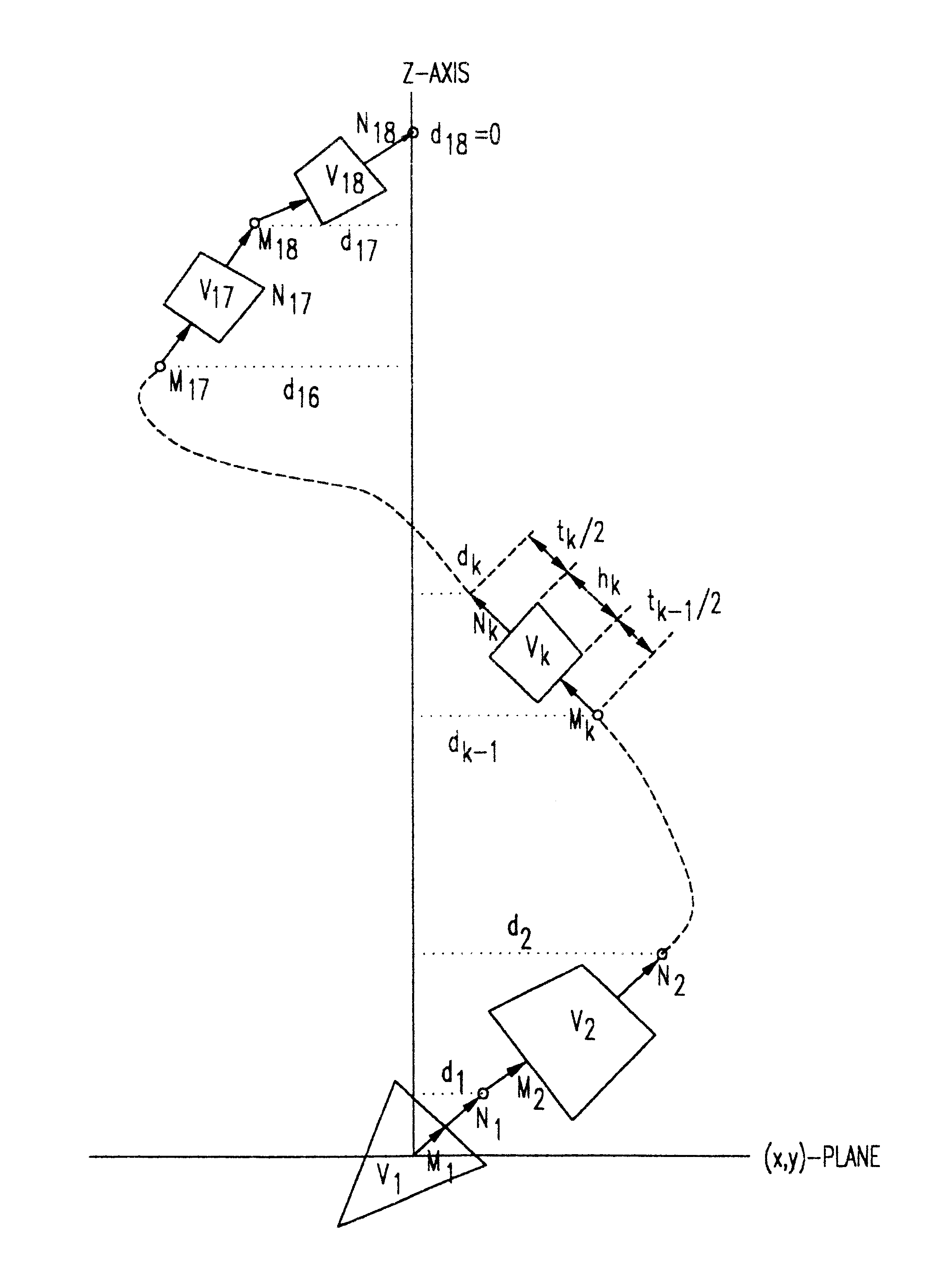Computation of shapes of three-dimensional linkage structures based on optimization techniques
a three-dimensional linkage structure and optimization technique technology, applied in the field of three-dimensional linkage structure computation, can solve the problems of permanent loss of mobility, difficult treatment of scoliosis and other spinal deformities,
- Summary
- Abstract
- Description
- Claims
- Application Information
AI Technical Summary
Problems solved by technology
Method used
Image
Examples
Embodiment Construction
The present invention is a method for generating a mathematical model simulating the manner in which the curvature of a human spine is deformed as a result of disease. The mathematical model is developed using methods of calculus on manifolds and global analysis to construct an algorithm that computes shapes of linkage structures subject to certain constraints. The constraints are derived from a predetermined hypothesis used to model the spine, and the algorithm is then used as a basis of a set of procedures which doctors may interactively use as a guide for surgical correction of three-dimensional spinal deformation. The present invention is also a method which uses the aforementioned model to predict the spinal deformity that may be expected to occur if the disease is allowed to progress.
In accordance with a preferred embodiment of the invention, the hypothesis for computing the model is based on the following set of assumptions.
(1) The erect stationary shape of the spine is the r...
PUM
 Login to View More
Login to View More Abstract
Description
Claims
Application Information
 Login to View More
Login to View More - R&D
- Intellectual Property
- Life Sciences
- Materials
- Tech Scout
- Unparalleled Data Quality
- Higher Quality Content
- 60% Fewer Hallucinations
Browse by: Latest US Patents, China's latest patents, Technical Efficacy Thesaurus, Application Domain, Technology Topic, Popular Technical Reports.
© 2025 PatSnap. All rights reserved.Legal|Privacy policy|Modern Slavery Act Transparency Statement|Sitemap|About US| Contact US: help@patsnap.com



